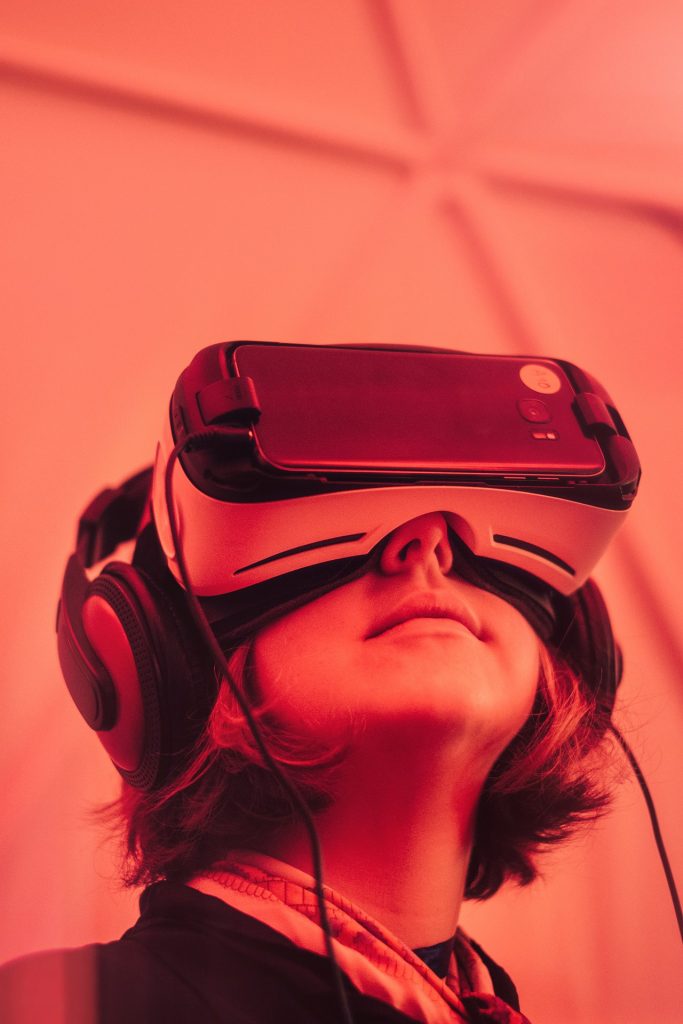by Cassie Bakshani
Memories are intrinsically linked to context; sounds, smells and other types of sensory stimuli can affect how a memory forms and is retrieved. The environments associated with conventional neuropsychological assessments, such as inside an MRI scanner, is a very different context than that of everyday memory situations. Consequently, traditional methods often do not accurately reflect an individual’s regular day-to-day memory ability.

In light of this, virtual reality (VR) technology is currently being explored as a tool to aid memory research. VR is defined as any three-dimensional, computer generated environment that transports the user to a place that is different to that of their physical surroundings. Within this space, the user can explore, interact with objects, or perform certain actions. Virtual reality alleviates the issue of context associated with conventional memory tasks, as it provides a unique platform, whereby an immersive visuospatial context can be generated. Within the virtual environment, memories can be formed and/or retrieved in relation to a higher degree of prosaic cognitive demands, thus enhancing the ecological relevance of the data collected.
Data from VR headsets can be downloaded and analysed wirelessly. By recording the brain signals of a participant whilst they are simultaneously immersed in the virtual environment, specific neural oscillations can be identified that are associated with learning and navigating through new environments. Researchers are then able to quantify how these oscillations relate to successful memory formation. VR technology is revolutionising memory research by allowing us to understand more clearly what is happening in the hippocampus and other parts of the brain during the formation of new memories and the retrieval of old memories.
From a methodological perspective VR is advantageous as it allows researchers to standardise assessment conditions and to maintain experimental control over critical features of the learning and testing experience. Another benefit is that environments can be constructed that would be impossible, or at least highly impractical, to create using traditional methods. For example, it is possible to rapidly modify environmental features and, in doing so, customise the visuospatial context to meet specific task requirements- participants can even be teleported between environments and thus, contexts. Virtual environments and scenarios explored in the literature for memory research purposes include a car, a shop, a kitchen and a maze, amongst others. This ability to generate and manipulate the environments more commonly found in daily life is significant because it ensures the results are more representative of everyday memory situations.
The applications of VR in memory research are extensive and its worth has already been realised in many areas. Applications include rehabilitation following post-traumatic amnesia, treatment of individuals with amnestic mild cognitive impairment, understanding prospective memory in stroke patients and the early detection of Alzheimer’s disease. One particularly concerning aspect of Alzheimer’s disease, and other types of dementia, is the loss of sociality and subsequent feelings of isolation, which often succeed the loss of physical autonomy. VR is now being implemented as a form of therapy, called reminiscence therapy, to help combat this issue in individuals with dementia. With the help of family members and carers, the person can be immersed in familiar environments or those that relate to important parts of their past. The hope is that this technology will encourage the generation of autobiographical memories and help those with dementia to retain or regain a sense of self, and along with it a renewed confidence to socialise.
It is truly remarkable to think that technology that started out as a means to provide interactive theatrical experiences could have such far-reaching implications. Not only in how we study brain functioning and cognition in humans, but also how we respond to and treat those with serious cognitive impairments.
Want to learn more? This article was based on:
https://www.frontiersin.org/articles/10.3389/fnins.2018.00408/full https://www.ncbi.nlm.nih.gov/pubmed/22261400 https://www.sciencedirect.com/science/article/pii/S0165027018300815?via%3Dihub http://newsroom.ucla.edu/stories/neuroscientist-harnesses-the-power-of-virtual-reality-to-unlock-the-mysteries-of-memory